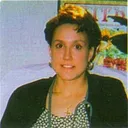Medical Scribes - Benefits and Challenges

auremar/123RF.com
The advent of electronic health records (EHRs) promised improvement in patient care: no more wading through thick charts, test results, or letters from consultants. No more wondering when dictations would be available. The real bonanza would be the almost instant exchange of vital information between care providers and institutions – possibly delaying disaster.
Instead, EHRs have decreased face-time spent with patients, replaced by time-consuming data entry. It’s a distraction to both physicians and patients. No bonanzas.
EHRs have, however, birthed an entirely new healthcare job category – medical scribes. Scribes, some claim, can provide many benefits to the practice of medicine, ultimately affecting the overall quality of healthcare delivery.
The Joint Commission defines a medical scribe as an unlicensed individual hired to enter information into the electronic health record (EHR) or chart at the direction of a physician or licensed independent practitioner. Scribes work within physician practices, hospitals, emergency departments, long-term care facilities, public health clinics, and ambulatory care centers. They are employed by healthcare organizations, physicians or other licensed independent practitioners, or work as independent contractors. This blog addresses some of the benefits and challenges of scribes within the physician practice setting.
Roles and Responsibilities of the Medical Scribe
Scribes accompany providers into the exam room and enter information in real time. A scribe’s core responsibility is accurate, detailed, and timely documentation of patient encounters. Scribes don’t make independent decisions or translations when entering information into the HER, except as the provider directs. Scribes help the provider navigate the EHR, locate information, respond to messages as directed, and research information at the provider’s request.
The scribe’s role should be clearly defined and communicated, with documented job descriptions, policies, and procedures. It’s important to have a signed agreement between the provider and the scribe with clear expectations and accountability.
Legal Considerations
A scribe’s responsibilities are ultimately controlled by the regulatory requirements and policies established by a healthcare setting, and the level of risk an employer is willing to accept. Practices must monitor federal, state, and regulatory changes to ensure their practices consistently meet compliance with standards.
Scribe Documentation Guidelines
The Joint Commission, in 2011, released guidelines to help regulate the use of scribes. These guidelines were updated in May 2019: https://www.jointcommission.org/issues/article.
Third party payers may have specific guidelines for how a scribe documents and how the electronic signature is applied. Each facility or practice should contact third-party payers for their requirements.
Common Documentation Duties for Medical Scribe
Examples of information entered by a scribe may include, but are not limited to:
- Name of the patient
- Date and time of service
- Name of the provider
- History of the present illness
- Review-of-systems
- Medication lists
- Physical examination, including vital signs
- Lab values and results of imaging studies
- Progress notes
- Continued care plans
- Indication of the involvement of a scribe
The provider is ultimately responsible for the documentation. A provider’s note should indicate:
- Affirmation of the provider’s presence during the encounter
- Verification that the information was reviewed by the provider
- Verification of information accuracy
- Additional information, if indicated
- Authentication of date and time
Benefits Include Freeing Physicians from Data Entry
Scribes capture medical information at the point of care which allows the provider to focus on bedside manner and provide attentive, face-to-face care that increases both patient and provider satisfaction. They can reduce the documentation time needed by the provider during a visit. The use of scribes can increase provider morale by reducing the number of clerical tasks and resulting stress while learning ever-changing systems.
A patient may perceive visits negatively if the provider spends most of her/his time looking at a computer monitor instead of the patient. A scribe can enter information into the EHR without intrusion, allowing the provider to focus more on the patient. Efficient clinical workflow may enable providers to see more patients rather than spending valuable time documenting.
Scribes may improve the overall quality of documentation. It can be more detailed, comprehensive, and available quickly. Improved documentation in turn can be used to achieve “meaningful use” EHR Incentive Program criteria and improve compliance with quality monitors, billing, and reimbursement.
Cost, Workflow Challenges
Adding medical scribes to a system creates challenges that must be considered and managed carefully. These challenges include:
- Scribes in the exam room may cause patients to be less forthcoming with pertinent information for accurate diagnosis and treatment, affecting the overall quality of care.
- Documentation workflows and responsibilities need to be redefined and responsibilities identified to streamline the process.
- Provider verification of scribed documentation for accuracy may slow overall workflow.
- If the scribe is inexperienced using medical terminology and in clinical workflow, documentation errors may lead to problems such as increased costs, increased turnaround time, and billing and medical errors.
- Some providers may not review scribed entries for accuracy before authentication, increasing the possibility of errors. These errors can affect treatment plans, coordination of care, coding, billing, and other documentation requirements.
- The provider may not be able to generate additional revenue to offset the expense of the scribe.
- When a scribe is not available, providers may not be able to navigate the system effectively and efficiently.
Patients should be introduced to the position of medical scribe, and be advised that scribes may allow more interactive time with their provider. Some patients may not want an additional individual in the room while they are examined or when discussing sensitive medical information. Patients have the right to refuse additional staff (e.g. scribes, residents) in the exam room.
Regardless of the practice type or size, the decision to use a scribe is significant, and must be carefully defined, managed and monitored. There is one certainty:
Providers must remain connected to all patient information.
American Health Information Management (AHIMA), www.ahima.org, is an important resource that provides information, resources, and tools to advance health information professional practices and standards.
Related Posts
